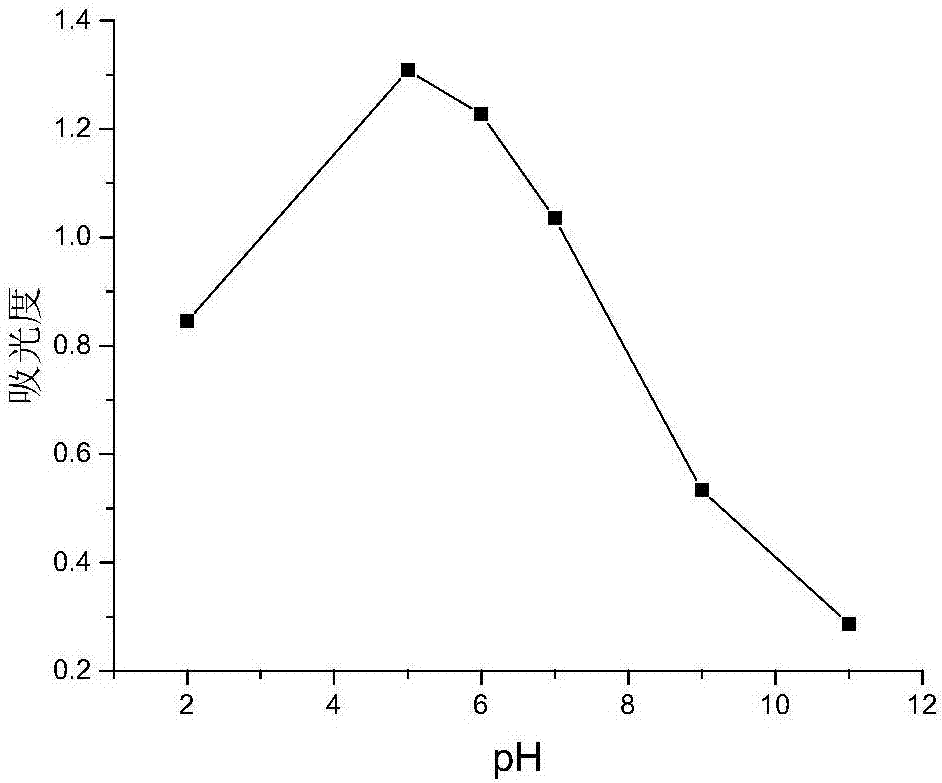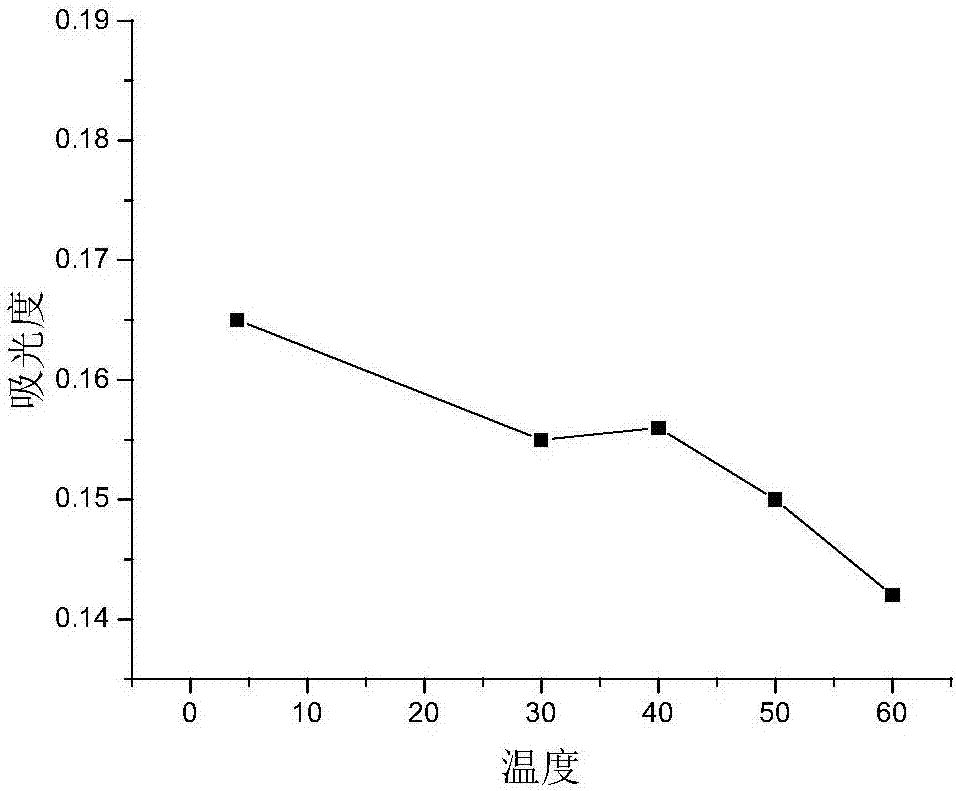Method for extracting phycoerythrin from dried porphyra yezoensis
A technology of laver and phycoerythrin, applied in chemical instruments and methods, algae/moss peptides, peptide sources, etc., can solve problems such as less research on phycoerythrin extraction
- Summary
- Abstract
- Description
- Claims
- Application Information
AI Technical Summary
Problems solved by technology
Method used
Image
Examples
Embodiment 1
[0029] 1) Take 10g of dried seaweed, pulverize with a pulverizer, pass through an 80-mesh sieve, and set aside.
[0030] 2) Take 0.5 g of Porphyra lavera powder, add 15 mL of 0.1M phosphate buffer (pH 7.0) to suspend, freeze at -20°C overnight, and then thaw at room temperature as a freeze-thaw process, repeated three times. Then, under the ice bath, the cells were disrupted with a power of 600 W, and the cells were treated by ultrasonic for 10 s and intermittently for 10 s for 2 min. The obtained algal body broken liquid was centrifuged at 8000g for 15min, the centrifugation was repeated twice, and the supernatant was collected;
[0031] 3) The crude phycobiliprotein extract was precipitated with 50% (w / v) ammonium sulfate and allowed to stand overnight. Centrifuge at 8000g for 15 minutes at 4°C, and discard the supernatant. Add water to dissolve the precipitate, dialyze (cutoff 3500Da), remove ammonium sulfate, dialyze freeze-drying, and obtain phycoerythrin.
[0032] The...
Embodiment 2
[0051] 1) Take 10g of dried seaweed, pulverize with a pulverizer, pass through an 80-mesh sieve, and set aside.
[0052]2) Take 0.5 g of Porphyra lavera powder, add 15 mL of 0.1M phosphate buffer (pH 7.0) to suspend, freeze at -20°C overnight, and then thaw at room temperature as a freeze-thaw process, repeated three times. Under the ice bath, the cells were disrupted with a power of 600 W, and the cells were treated by ultrasonic for 10 s and 10 s intermittently for 2 min. The obtained algal body broken liquid was centrifuged at 8000g for 15min, the centrifugation was repeated twice, and the supernatant was collected;
[0053] 3) The crude phycobiliprotein extract was precipitated with 50% (w / v) ammonium sulfate and allowed to stand overnight. Centrifuge at 8000g for 15 minutes at 4°C, and discard the supernatant. Add water to dissolve the precipitate, dialyze (cutoff 3500Da), remove ammonium sulfate, dialyze freeze-drying, and obtain phycoerythrin.
[0054] The obtained p...
Embodiment 3
[0056] 1) Take 10g of dried seaweed, pulverize with a pulverizer, pass through an 80-mesh sieve, and set aside.
[0057] 2) Take 0.5 g of Porphyra lavera powder, add 15 mL of 0.1M phosphate buffer (pH 7.0) to suspend, freeze at -20°C overnight, and then thaw at room temperature as a freeze-thaw process, repeated three times. Under the ice bath, the cells were disrupted with a power of 600 W, and the cells were treated by ultrasonic for 10 s and 10 s intermittently for 2 min. The obtained algal body broken liquid was centrifuged at 8000g for 15min, the centrifugation was repeated twice, and the supernatant was collected;
[0058] 3) The crude phycobiliprotein extract was precipitated with 50% (w / v) ammonium sulfate and allowed to stand overnight. Centrifuge at 8000g for 15 minutes at 4°C, and discard the supernatant. Add water to dissolve the precipitate, dialyze (cutoff 3500Da), remove ammonium sulfate, dialyze freeze-drying, and obtain phycoerythrin.
[0059] The obtained ...
PUM
 Login to View More
Login to View More Abstract
Description
Claims
Application Information
 Login to View More
Login to View More - R&D
- Intellectual Property
- Life Sciences
- Materials
- Tech Scout
- Unparalleled Data Quality
- Higher Quality Content
- 60% Fewer Hallucinations
Browse by: Latest US Patents, China's latest patents, Technical Efficacy Thesaurus, Application Domain, Technology Topic, Popular Technical Reports.
© 2025 PatSnap. All rights reserved.Legal|Privacy policy|Modern Slavery Act Transparency Statement|Sitemap|About US| Contact US: help@patsnap.com



